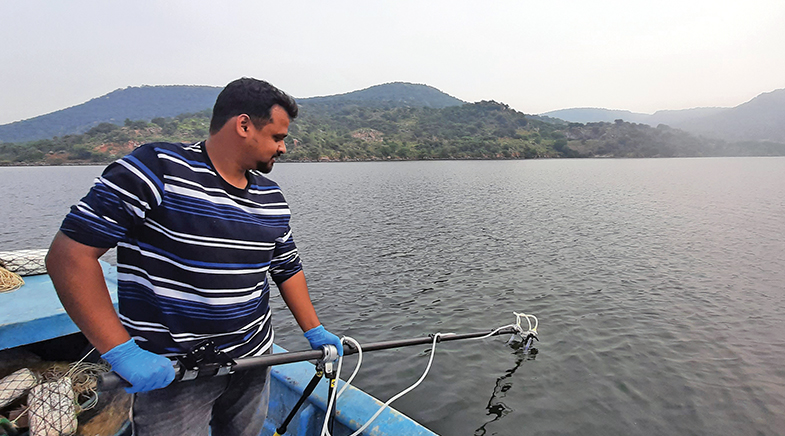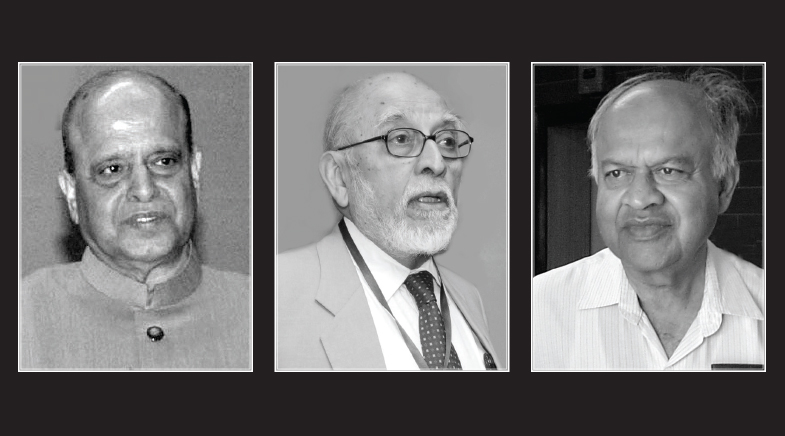Monsoon musings
-
- from Shaastra :: vol 04 issue 05 :: Jun 2025

New research and new technology for data gathering and computation are driving a rapid evolution of the science of monsoon forecasting.
The South Asian monsoon is one the world's most unique atmospheric phenomena. It began probably 27 million years ago, after the Indian plate collided with the Eurasian plate and created the Himalayas. Since then, the monsoon has been arriving every year with regularity, but with various levels of intensity depending on the climatic conditions on Earth. A warmer Earth usually produces a more intense monsoon and a cooler Earth results in a weaker monsoon. Variations of the monsoon determined the history of the subcontinent, influencing migrations and downfall of empires in and around the subcontinent. Famines were common when it failed, with significant impact on India's population over a period.
BLOWING HOT AND COLD
Given the monsoon's impactful history, scientists have been trying to understand its immediate future. Its overall behaviour is easy to predict from basic physics. A warmer Earth holds more moisture, and this additional moisture will result in more rainfall. So, as is evident from the history of the subcontinent, scientists expect the monsoon to intensify over this century and beyond, as the Earth's average temperature increases due to increasing carbon dioxide emissions. Since carbon dioxide levels are not expected to come down to pre-industrial levels in the foreseeable future, temperatures are not going to go down, and the monsoon is expected to increase in vigour over this century.
However, this is an oversimplification that isn't useful for planning. For example, temperatures began to increase on Earth after the last Ice Age, mainly due to increasing solar radiation as the Earth's axial tilt changed its orientation. Palaeo records show that the monsoons were more intense during these warmer periods. But the current age is not a good model of the past. Human beings have introduced several new complications: deforestation, high pollution, groundwater depletion, large-scale irrigation, and so on. Deforestation will reduce the moisture in the air. Tiny particles in the atmosphere – from pollution – can reflect sunlight back, thereby reducing the solar radiation and thus affecting the temperature and, hence, rainfall. However, the precise ways and magnitude to which these factors influence the monsoon are not known. On the other hand, meteorologists consider the monsoon a global phenomenon, as atmospheric and ocean phenomena halfway across the globe can influence the monsoon rains in India.
The monsoon determines the future of the Indian subcontinent. It is an active area of scientific research in India and the world.
The Cover Story package this time is a deep dive into some key aspects on the monsoon. The main story, by T.V. Jayan, is on how scientists are figuring out intriguing relationships between weather phenomena around the world, and how these relationships keep changing even as scientists discover them. The second story, by Rekha Dixit, is about the fascinating world of palaeo climate, and what fossils tell us about the monsoon. The third story, also by Rekha, is about the increasing power of nowcasting, the science of forecasting local weather roughly six hours in advance. The fourth is a snapshot of the monsoon in numbers, especially the technologies that are employed in predicting and dealing with the monsoon.
EYES ON THE FUTURE
As is the case with many Shaastra stories, the Cover Story is a curtain raiser to what the magazine will try covering actively over the next few years. The monsoon determines the future of the subcontinent. It is an active area of scientific research in India and the world, and this research feeds into accurate forecasts in many ways. India has had a long history of monsoon forecasting, but they have been unreliable for more than a century. Even when modern models were used, beginning from the end of the 1980s, forecasting continued to be fraught with errors. In the last decade, their accuracy has started improving significantly, as the National Monsoon Mission invested in technology and science. The India Meteorological Department improved data collection and computing infrastructure. It moved towards dynamical models rather than statistical models. In recent years, it has been using ensemble forecasting, by using inputs from a large number of global models.
Even as the forecasts improve, and new technology gets developed for data gathering and computation, climate change is creating new difficulties for scientists, driving a rapid evolution of the science itself. Shaastra will keep a close watch on these advances.
See also:
Let's take a monsoon rain check
Flashback, fast forward
Come rain or shine
It's raining solutions
Have a
story idea?
Tell us.
Do you have a recent research paper or an idea for a science/technology-themed article that you'd like to tell us about?
GET IN TOUCH














